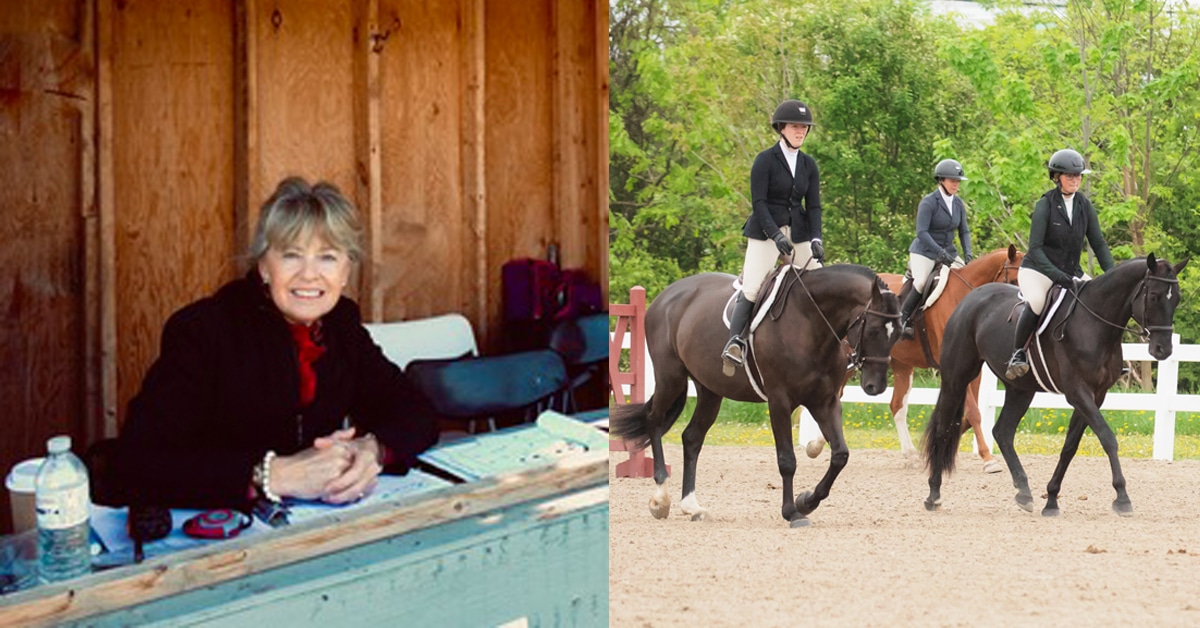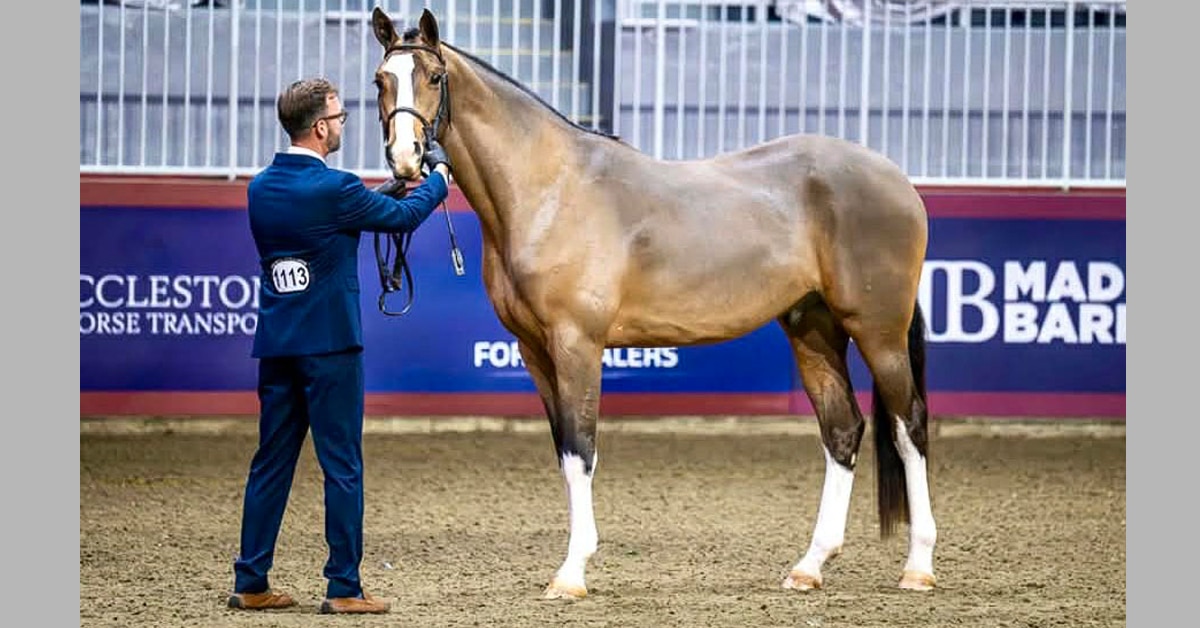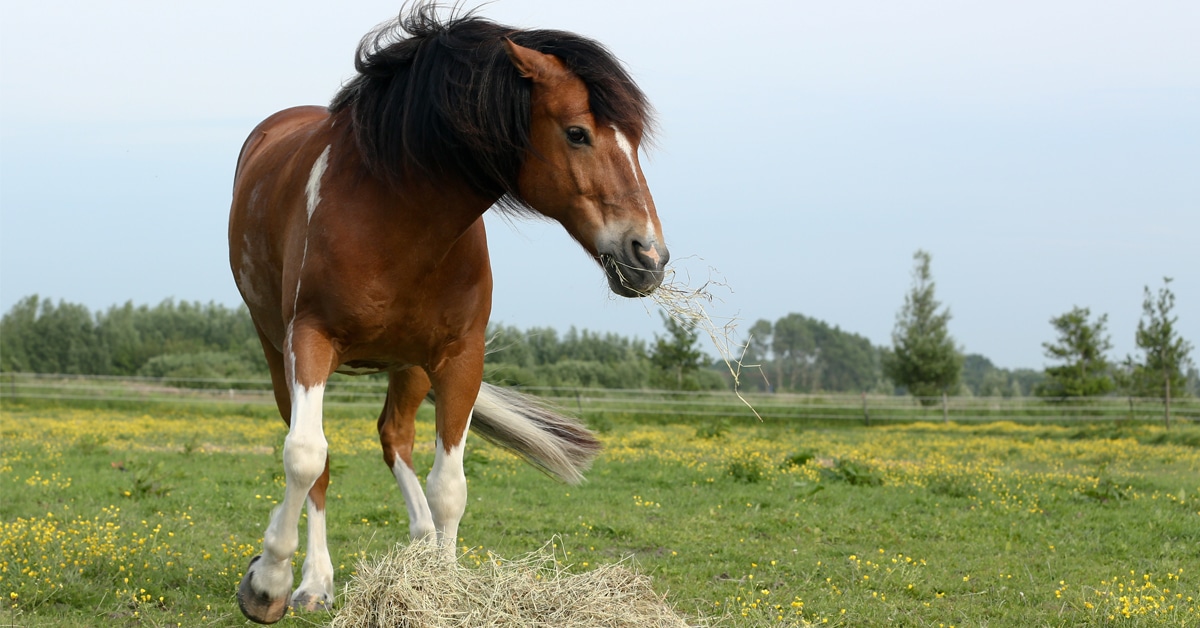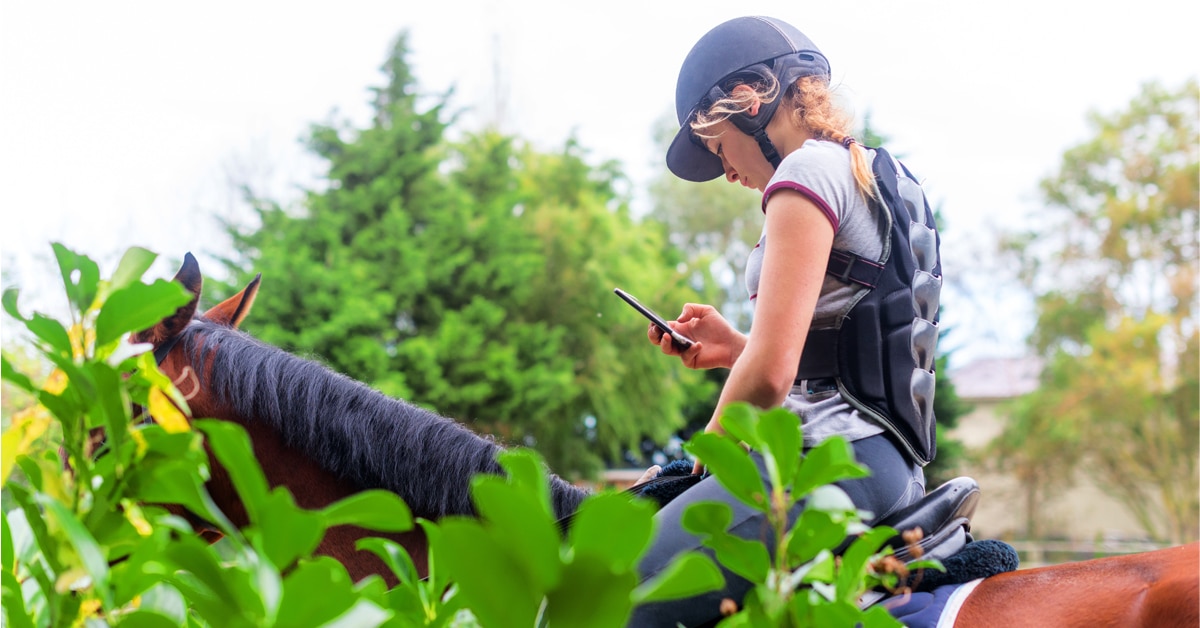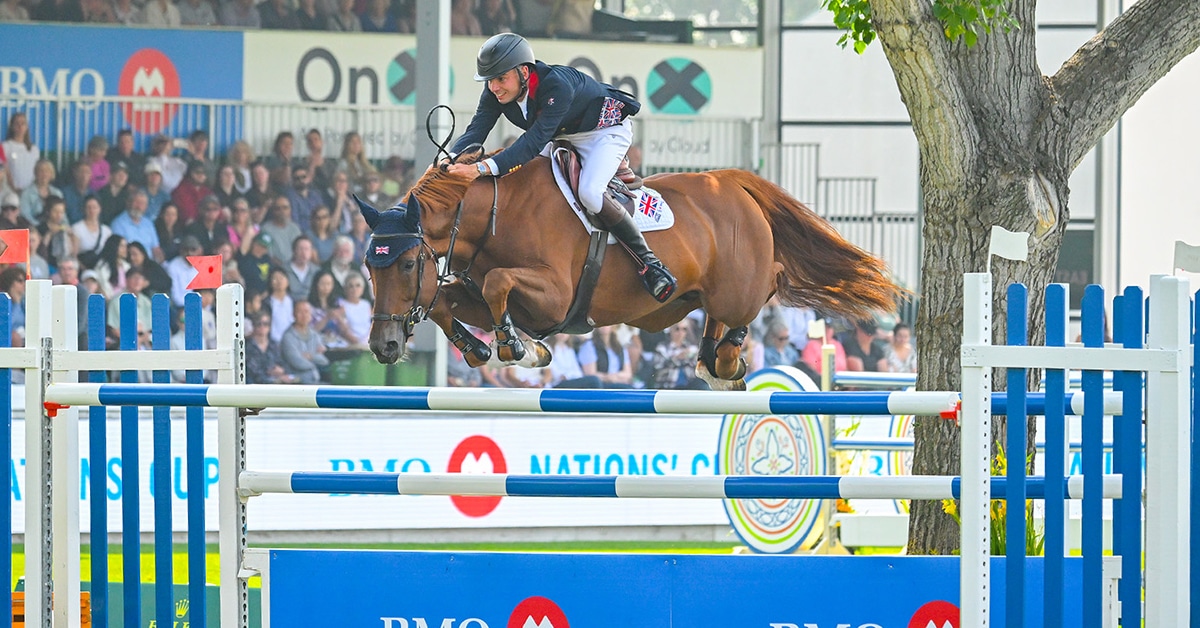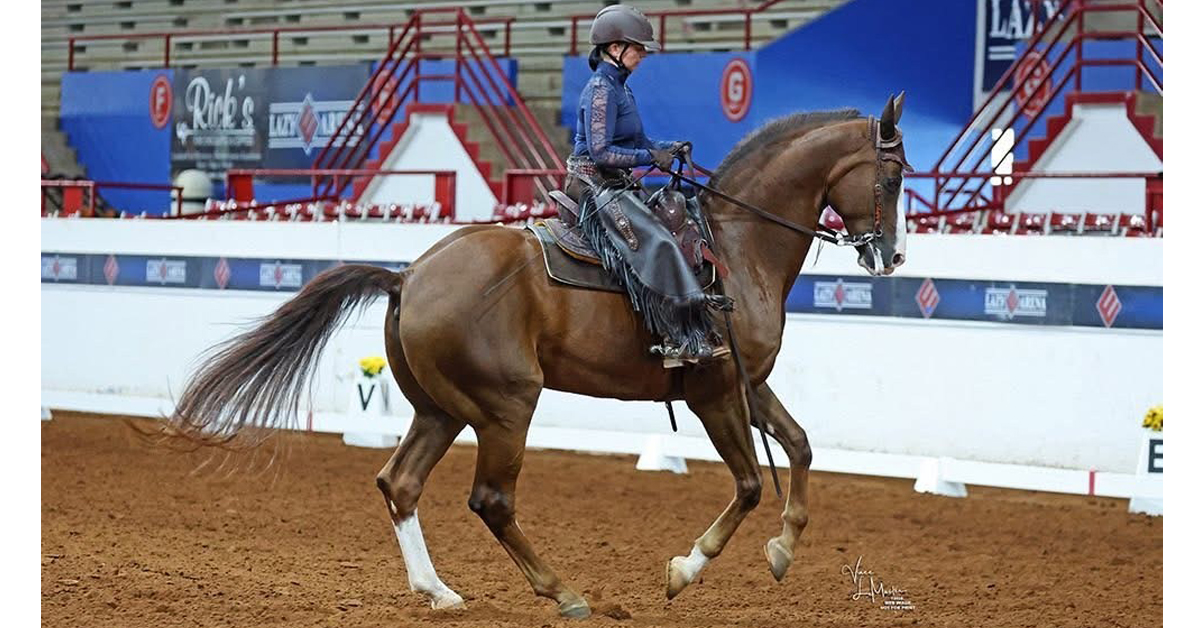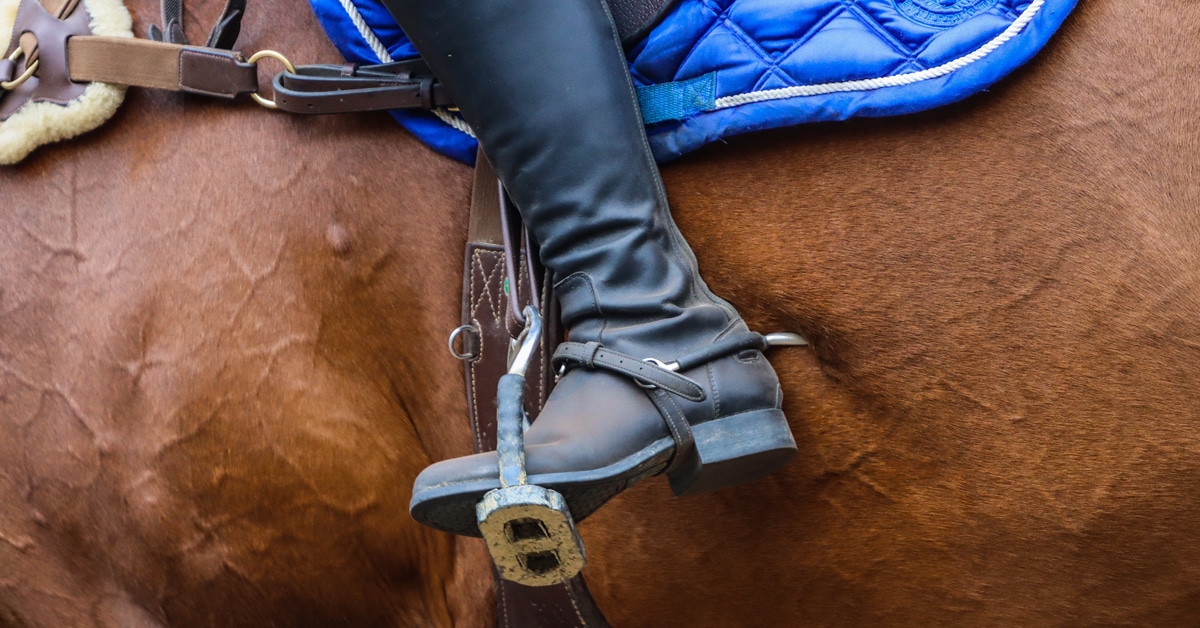The flying change is one of those movements that defines the beginning of upper-level dressage training. First introduced at third level, flying changes appear in every test from 3-1 to grand prix, starting with a single change and increasing in difficulty up the levels to the one-tempis.
The categorization of flying changes as a higher-level movement in dressage can be puzzling to those in other disciplines such as hunters, where horses are expected to have an established change quite early in their training. The dressage change is fundamentally different from the hunter change, however, and it’s helpful to review the description of the movement as listed in the Equestrian Canada rules for dressage:
The flying change is performed in one stride with the front and hind legs changing at the same moment. The change of the leading front and hind leg takes place during the moment of suspension. The aids should be precise and unobtrusive. Flying changes of leg can also be executed in series, at every 4th, 3rd, 2nd or at every stride. The horse, even in the series, remains light, calm and straight with lively impulsion, maintaining the same rhythm and balance throughout the series concerned. In order not to restrict or restrain the lightness, fluency and ground cover of the flying changes in series, enough impulsion must be maintained. Aims of flying changes: To show the reaction, sensitivity and obedience of the horse to the aids for the change of leg.
Note that the rules specify the front and hind legs must change at the same moment – during the moment of suspension. That’s what dressage riders refer to as a “clean change.” Horses who have been allowed to perform “late” changes, where the front leg changes before the hind leg, can be challenging to re-train to perform correct, clean dressage changes. That is one of the many reasons why help from a knowledgeable, experienced professional is strongly recommended when first introducing the flying change.
We turned to Meredith Risk, a grand prix rider and trainer who has successfully trained numerous horses up the levels to grand prix. The owner of Nobleton Dressage in Nobleton, ON, Risk works with horses of all breeds, ages and levels of training and has one underlying rule in her training philosophy: keep it simple.
Is Your Horse Ready for Flying Changes?
According to Risk, recognizing when to introduce the flying change is as important as knowing how. “Many trainers, myself included, introduce changes in a ‘playful’ way long before third level. Even foals will demonstrate flying changes in turnout. But in general, by third level the horse can collect the canter, has a good-quality canter with some jump, and is sensitive enough to the aids. A correct dressage change must be exactly on the rider’s aid (very important for tempis), clean and straight. It should also have some jump and expression. Once the changes are taught incorrectly, they can be quite difficult to fix. It’s not always easy to recognize a late or otherwise incorrect change from the saddle, so at the very least, having knowledgeable eyes on the ground helps.”
When it comes to introducing flying changes, Risk says the age of the horse is less important than the level of training. “Before serious training of the changes begins, I like the horse to have confirmed walk/canter and canter/walk transitions, which means he can organize his legs and collect a little. I also like to be able to ride at least shallow half-passes. It’s important to have total control over the shoulders and haunches, and I must be able to mobilize both. I will usually ‘plant the seed’ of flying changes before the counter-canter is too established. Once counter-canter is very established, teaching changes can be more difficult.
“The horse’s individual personality is also very important. I might wait a little longer with a nervous or hot horse that needs more time to mature in the work.
“Everyone has their own methods and favourite exercises for teaching the changes. Generally, I prefer to introduce it across a short diagonal so the canter doesn’t have a chance to get too long and the horse doesn’t anticipate too much. I also often ask for the change from counter-canter on the long side of the arena. For a horse that doesn’t offer the change right away, asking from counter-canter on a 20-metre circle can be effective.
“In the beginning, I usually avoid asking for the change from a figure-eight or serpentine, as I don’t want the horse to associate the change with a change of direction.”
Try This at Home to Introduce Flying Changes
If you want to improve your flying changes, or you’re ready to introduce them (with the help of a professional) to a horse that is well-established in the necessary basics, Risk recommends the following simple exercise.
1. Test the horse’s response to the leg by going forward and back within the gait at canter and counter-canter. The response to the aids should be immediate, with no hesitation to extend or collect.
2. Next, on the straight side, ride several walk/canter and canter/walk transitions. Make sure the departs are straight and very prompt. You should merely think about it and the horse should respond. You should be able to perform the transitions precisely – test yourself by asking for four strides of walk, followed by four strides of canter, and repeat.
3. Start alternating between true canter and counter-canter with walk transitions in between. Every once in a while, ‘refresh’ either the counter or true canter by riding forward and back a few times. You want a high-quality, bouncy canter with some positive anticipation.
4. At a point when you feel the horse is really paying attention to your leg aids, ask for the flying change by switching your legs without coming to the walk. It’s a very simple exercise, but it works most of the time. When the horse responds with a clean change, make sure to positively reinforce with a treat or your voice or an end to the training session.
Troubleshooting Flying Changes
Risk says it’s common in the beginning for horses to demonstrate some excitement, tension, and anticipation when learning the changes. Late or crooked changes are more serious issues that need to be corrected right away.
“It’s hard to remove all tension and anticipation, and these actually can be valuable up to a point,” she says. “Hot horses just eventually need to do enough flying changes that they are not so exciting anymore. Positive reinforcement is key. I always have sugar on the ledge for a horse learning changes, and I’ve even used a clicker to give a clear, positive message at the right time.
“Late changes can be caused by a number of different factors and each will need different corrections. A crooked horse will need to be straightened. A horse that is slow to react to the leg will need to be sharpened; the response to the leg in the walk-canter needs to be electric; there is no room for even a one-second delay. A delay in the reaction to the leg can produce a late change. For a more placid horse, a tap with the whip may be necessary.
“Sometimes changes are also late because the canter is too big or too slow. A quick, efficient canter is best for changes. Also, we can’t discount the impact the rider has. A rider mistake in the aid or in the timing can definitely produce a late change. A knowledgeable person watching on the ground should be able to pinpoint the cause of the late change.”
Try to keep training sessions reasonably short, praise or reward often, and always end on a positive note.
The Latest
